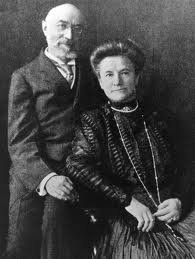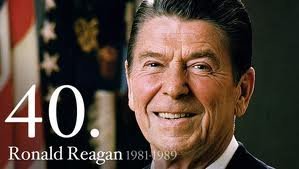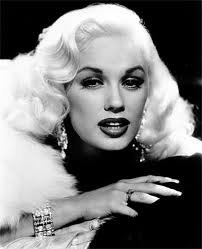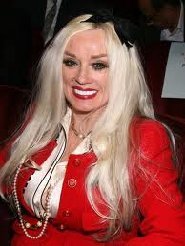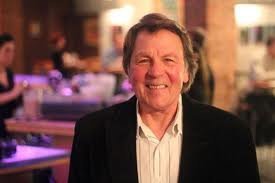A typewriter is a mechanical or electromechanical machine for typing characters. Typically, a typewriter has an array of keys, and each one causes a different single character to be produced on paper by striking an inked ribbon selectively against the paper with a type element. At the end of the nineteenth century, the term 'typewriter' was also applied to a person who used such a device.
The first commercial typewriters were introduced in 1874, but did not become common in offices until after the mid-1880s. The typewriter quickly became an indispensable tool for practically all writing other than personal handwritten correspondence. It was widely used by professional writers, in offices, business correspondence in private homes, and by students preparing written assignments.
Typewriters were a standard fixture in most offices up to the 1980s. Thereafter, they began to be largely supplanted by personal computers running word processing software. Nevertheless, typewriters remain common in some parts of the world. In many Indian cities and towns, for example, typewriters are still used, especially in roadside and legal offices due to a lack of continuous, reliable electricity.
The QWERTY keyboard layout, developed for typewriters in the 1870s, remains the standard for computer keyboards. The origins of this layout remain in dispute.
Notable typewriter manufacturers included E. Remington and Sons, IBM, Godrej, Imperial Typewriter Company, Oliver Typewriter Company, Olivetti, Royal Typewriter Company, Smith Corona, Underwood Typewriter Company, Facit, Adler, and Olympia-Werke.
History
Although many modern typewriters have one of several similar designs, their invention was incremental, developed by numerous inventors working independently or in competition with each other over a series of decades. As with the automobile, telephone, and telegraph, a number of people contributed insights and inventions that eventually resulted in ever more commercially successful instruments. Historians have estimated that some form of typewriter was invented 52 times as thinkers tried to come up with a workable design.
Some early typing instruments include:
- In 1575, an Italian printmaker, Francesco Rampazetto, invented the scrittura tattile, a machine to impress letters in papers.
- In 1714, Henry Mill obtained a patent in Britain for a machine that, from the patent, appears to have been similar to a typewriter. The patent shows that this machine was actually created: "[he] hath by his great study and paines & expence invented and brought to perfection an artificial machine or method for impressing or transcribing of letters, one after another, as in writing, whereby all writing whatsoever may be engrossed in paper or parchment so neat and exact as not to be distinguished from print; that the said machine or method may be of great use in settlements and public records, the impression being deeper and more lasting than any other writing, and not to be erased or counterfeited without manifest discovery."
- In 1802, Italian Agostino Fantoni developed a particular typewriter to enable his blind sister to write.
- Between 1801 and 1808, Italian Pellegrino Turri invented a typewriter for his blind friend Countess Carolina Fantoni da Fivizzano.
- In 1823, Italian Pietro Conti da Cilavegna invented a new model of typewriter, the tachigrafo, also known as tachitipo.
- In 1829, American William Austin Burt patented a machine called the "Typographer" which, in common with many other early machines, is listed as the "first typewriter". The London Science Museum describes it merely as "the first writing mechanism whose invention was documented", but even that claim may be excessive, since Turri's invention pre-dates it.
By the mid-19th century, the increasing pace of business communication had created a need for mechanization of the writing process. Stenographers and telegraphers could take down information at rates up to 130 words per minute, whereas a writer with a pen was limited to a maximum of 30 words per minute (the 1853 speed record).
From 1829 to 1870, many printing or typing machines were patented by inventors in Europe and America, but none went into commercial production.
- American Charles Thurber developed multiple patents, of which his first in 1843 was developed as an aid to the blind, such as the 1845 Chirographer.
- In 1855, the Italian Giuseppe Ravizza created a prototype typewriter called Cembalo scrivano o macchina da scrivere a tasti ("Scribe harpsichord, or machine for writing with keys"). It was an advanced machine that let the user see the writing as it was typed.
- In 1861, Father Francisco João de Azevedo, a Brazilian priest, made his own typewriter with basic materials and tools, such as wood and knives. In that same year the Brazilian emperor D. Pedro II, presented a gold medal to Father Azevedo for this invention. Many Brazilian people as well as the Brazilian federal government recognize Fr. Azevedo as the inventor of the typewriter, a claim that has been the subject of some controversy.
- In 1865, John Jonathon Pratt, of Centre, Alabama (US), built a machine called the Pterotype which appeared in an 1867 Scientific American article[20] and inspired other inventors.
- Between 1864 and 1867, Peter Mitterhofer, a carpenter from South Tyrol (then part of Austria) developed several models and a fully functioning prototype typewriter in 1867.
- 4 boneless, skinless chicken breasts, lightly pounded
- Salt for sprinkling
- Black pepper for sprinkling
- 1/2 cup bread crumbs
- 1 teaspoon garlic powder
- 1/2 cup pizza sauce
- 3/4 cup shredded mozzarella cheese
- 16 slices pepperoni
- Dried oregano for sprinkling
- Preheat oven to 375º. Coat a baking sheet with cooking spray. Sprinkle chicken evenly with salt and pepper.
- In a shallow dish, combine bread crumbs and garlic powder; mix well. Dip chicken into bread crumb mixture, coating evenly on both sides. Place on baking sheet.
- Bake 15 minutes. Remove chicken from oven, top evenly with pizza sauce, mozzarella cheese, and pepperoni. Sprinkle lightly with oregano. Place back in oven and bake 8 to 10 minutes more or until no longer pink in center. Serve immediately.
And births this date include....


1943 – Fabian Forte, American singer
Each year on National Chopsticks Day, people worldwide celebrate the humble and ancient utensils on February 6th.
Around 1200 B.C., Chinese cooks began using chopsticks to prepare food. These tools were likely long enough to reach into hot cooking pots. Then about 400 B.C., when fuels for cooking became scarce, food was prepared in smaller pieces reducing the number of resources needed to cook it. At the same time, the need for sharp eating utensils faded, and shorter chopsticks entered the scene.
Once these handy eating tools found their way to the dinner table, they spread around the world. Portable and elegant in their design, they also vary in style from region to region.
Today chopsticks may be made from wood such as bamboo or aspen. Elaborately carved chopsticks may be cut from jade, ivory, or wood, and artisans may ornately paint some chopsticks with miniature scenes.
HOW TO OBSERVE
Use chopsticks to eat your meals. Practice using chopsticks or teach someone how to use them. Share your favorite set of chopsticks or your favorite meal to eat with chopsticks. Visit your favorite restaurant where chopsticks are provided. Make sure you give them a shout out, too! Of course, you should invite someone to celebrate with you, also! Maybe ask them to join you in a chopstick competition to see who is the most proficient using them.





